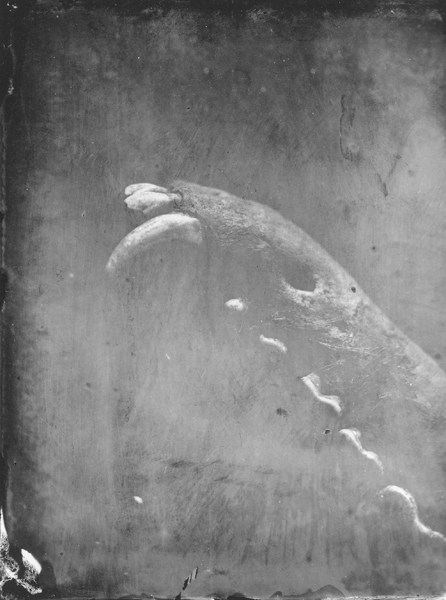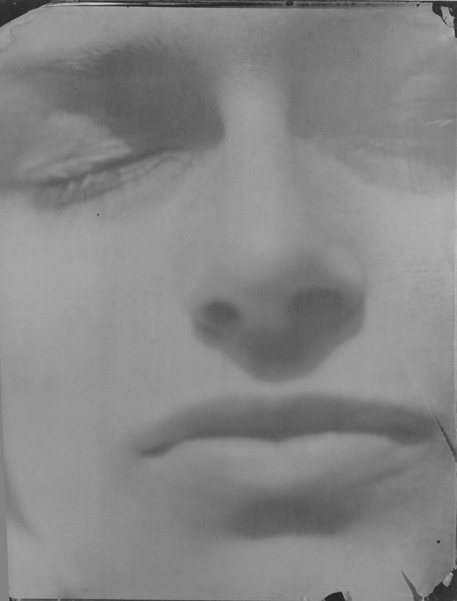Sally Mann
October 14th, 2008A year or so ago I had a look at Sally Mann’s 2003 collection, “What Remains,” her photographic exploration of death. This work was inspired by the death of her father and the suicide of an escaped convict pursued by police onto her farm. A few weeks ago I rented “What Remains: The Life and Work of Sally Mann,” a documentary filmed over the course of a decade.
Mann is a tremendously gifted photographer. And a magnet for controversy. She first won fame in 1992 for publishing photos of her naked children in “Immediate Family.” Critics vilified her as a pornographer. I would not go that far, but I did find the images disturbing. One of them shows her then five-year old daughter Jessie tarted up in pearls and lipstick, and topless. “Dirty Jessie” shows her two years earlier in what may be a “natural” pose, but it was a bit too close to crossing the line into luridness. And is Mann actually so naive that she does not recognize the double entendre in the photo’s title? With the very real threat posed by child molesters, I found the series irresponsible. Nice lighting, though.
I rented the documentary largely to hear Mann explain in her own words her thinking behind “Immediate Family” and “What Remains.” Basically I wanted to hear her justify her work. Instead I came away feeling creeped out.
There is a scene near the end of the movie “American Beauty” in which Kevin Spacey’s character, Lester Burnham, is slumped dead in a kitchen chair, having been shot in the back of the head. (Not really a spoiler: Spacey’s narration at the start of the film informs you he’ll be dead in a year.) The still smiling corpse is discovered by Lester’s daughter and her boyfriend Ricky. Ricky says “wow,” stoops and smiles back at Spacey’s corpse, finding the same kind of beauty in this as he did in a dead bird he had filmed. He had said, “Sometimes there’s so much beauty in the world I feel like I can’t take it, like my heart’s going to cave in.” But as he rises, Ricky gets a good look at the gaping wound at the back of Spacey’s head. His smile fades, replaced by revulsion and horror. He sees that this corpse is not beautiful. It is a dead—a murdered—human being. He has been cured of his morbid fascinations.
Not so for Mann. At one point in the documentary Mann visits a forensic training facility, a forest strewn with decomposing bodies. Mann squats down next to one of the corpses and remarks upon the beautiful color of the decay. This is land dedicated to train investigators to solve murders, to rid the world of this ugliness, and she is focused on the symmetry of a leaf-shaped chunk of flesh missing from the back of a victim’s thigh. Nice composition, by the way.
In her book and the film, Mann speaks with both matter-of-factness and reverence about death. She recognizes that when a person dies they are no longer there, but also feels that the land is consecrated—made holy—by death. When her beloved pet dog dies, she buries it in a steel metal cage. When sufficient time has elapsed, she digs up the skeletal remains and lays them out in her studio to photograph. To disturb this animal’s grave and use it in this manner seems nothing less than desecration, robbing it of its sacredness, its holiness.
Mann never really addresses her judgement in printing photos of her naked children in the documentary. She remarks that her children are photogenic and take direction well. She claims that she was surprised by the controversy, and seems reluctant to show work that will bring up those questions again. However, while curating her “What Remains” show, Mann decides that the perfect way to balance and round out the exhibit is to include portraits of her children’s faces. She says that this is an affirmation of life, but the photos closely resemble death masks, almost as though these were the faces of the corpses she had photographed. Why would she do this? There is a taboo against photographs of dead Americans (but not foreigners). This was enforced by the Pentagon for soldiers but has been applied to news reports of civilian deaths as well. The saying goes that “there’s no such thing as bad publicity.” What better way to attract attention to her show than to chose another hot button issue, photos of death, and find a way to tie in her now famous children again?
Maybe I am being too harsh. Maybe Mann is not an exploitative, immoral, publicity hound. Perhaps she is just naive, or possibly even enlightened. Regardless, the next time I admire the work of a photographer whose composition or technique reminds me of Mann’s, I’ll qualify my praise: “Your work reminds me of Sally Mann, without all that creepiness.”
Michael Singman-Aste
Postdiluvian Photo
Tags: death, Sally Mann






Very well written, Michael. I enjoyed reading this post. And your last sentence made me smile.
[…] I was reminded of Sally Man’s “What Remains,” but mostly in how different Bolsega’s works were. I had written of Mann, […]
[…] Mann is a tremendously talented photographer whose work never fails to creep me out. I came across her “At Twelve: Portraits of Young Women” (1988) in the stacks at the […]
Sally Mann is a pioneer in as much as she is photographing what can be judged as taboo and publishing these photographs to a general audience. Photography by its very nature is exploitive and manipulative and she is using these features to the max. It’s the intention that makes the images controversial for me. I don’t pretend to know Sally Mann’s intention and I have a choice to take from her work what I want. The images are strikingly beautiful and the technique flawless.
Children’s bodies can be among the most endearing and innocent visions and for these reasons Mann’s photographs can be disturbing and while the children being photographed by the parent can be reassuring, it is also what puts some viewers off. The very tension created by these opposites is where the art lies. This doesn’t make it right or wrong but it does make for the controversy to go on and on.
Sue, thank you for your thoughtful comment. I think you might be interested in my post “I, Object” at http://www.postdiluvianphoto.com/blog/2008/08/23/i-object-9/, which considers the idea that all images of women may be inherenly exploitative.